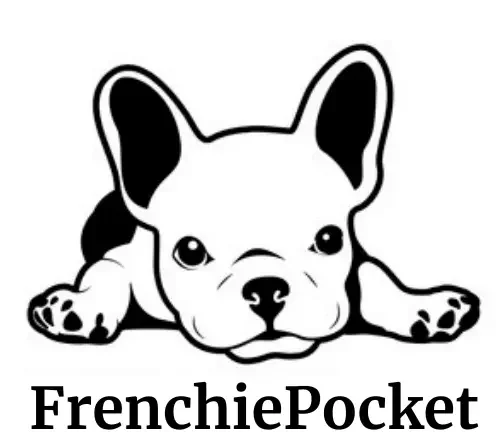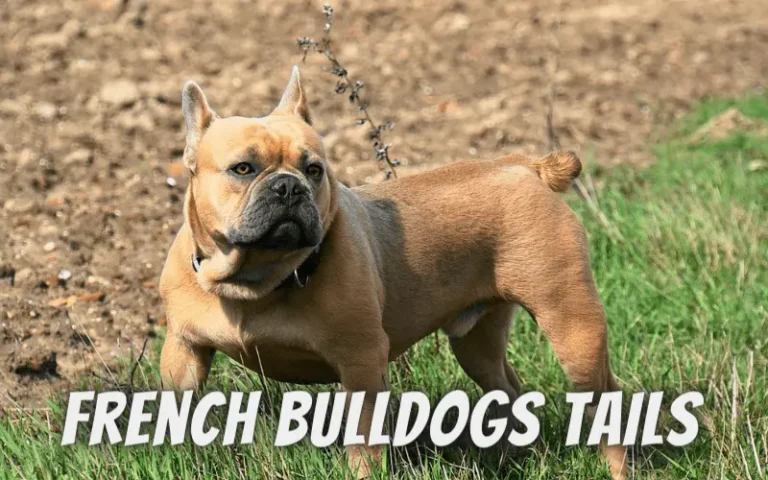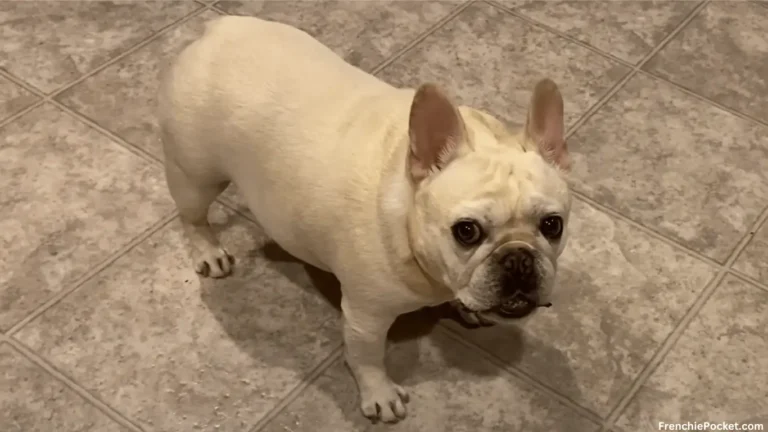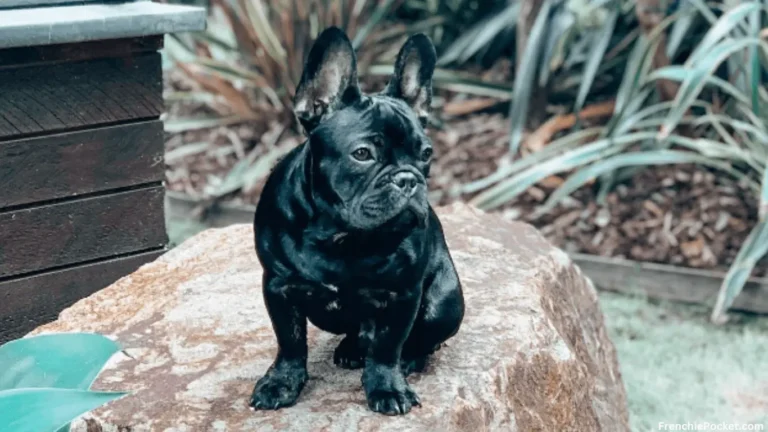French Bulldog Skull – Exploring the Unique Structure of the French Bulldog Heads
Ever caught yourself gazing into the soulful eyes of a French Bulldog, captivated by its unmistakable facial features?
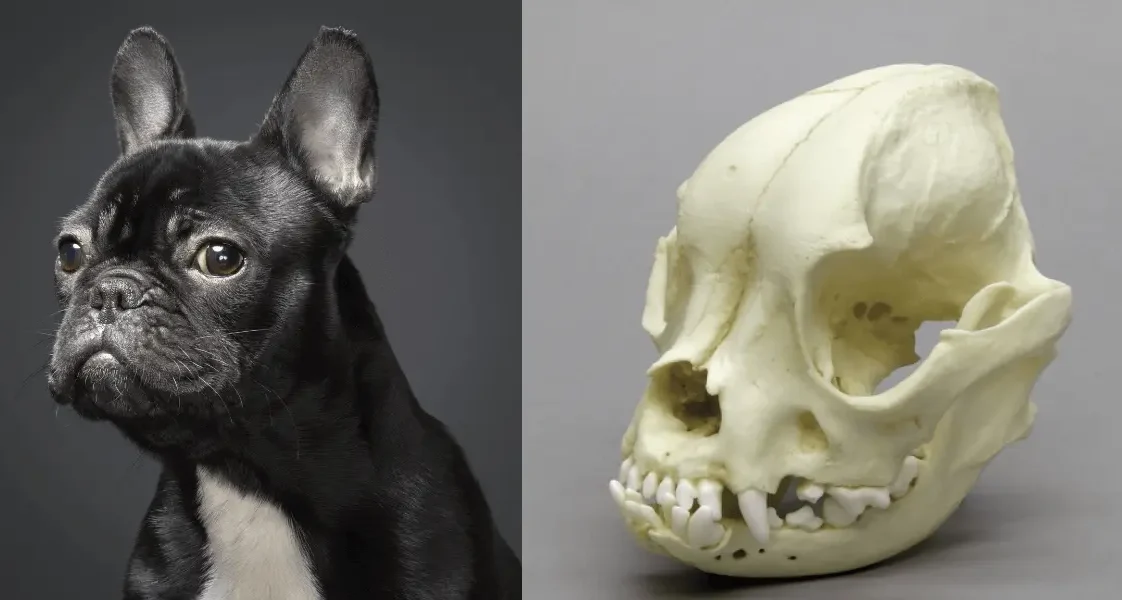
It’s hard not to be charmed. Those bat-like ears, squashed nose, and broad, rounded head are not just hallmark traits but a testament to the dog’s intriguing anatomy. Delving deeper, the French Bulldog skull is not just a marvel of evolution and selective breeding but also a complex structure with implications far beyond appearance. While their unique head shape lends them an undeniable charisma, it also whispers tales of genetic codes, evolutionary paths, and health vulnerabilities. So as you journey through this piece, remember: you’re not merely exploring the adorable facade of the Frenchie but unlocking the mysteries of their biological blueprint and its profound effects on their well-being. Welcome to the captivating saga of the French Bulldog skull.
The Skull of French Bulldog
Brachycephalic Muzzle:
The term ‘brachycephalic’ finds its roots in Greek, with ‘Brachy’ meaning short and ‘cephalic’ denoting the head. This very characteristic bestows upon the French Bulldog its unmistakably squished face. Characterized by a compact jaw structure coupled with a recessed nose, this breed stands apart from its counterparts, boasting elongated muzzles. However, this facial structure is not without its drawbacks. The condensed nasal passages and airways often result in a condition known as Brachycephalic Obstructive Airway Syndrome (BOAS). It’s a challenge that makes breathing laborious, especially during activities or in sweltering conditions. As such, potential owners and breed enthusiasts must be knowledgeable about this inherent health issue.
Bat-like Ears:
When one thinks of a French Bulldog, the image that often springs to mind features those iconic, upright ears. Resembling the wings of a bat, these ears stand alert and attentive. But they are not just about aesthetics. Functionally, they are a marvel, designed to capture a broad spectrum of sounds. Their strategic placement, set wide apart on the skull, not only contributes to the breed’s distinctive look but also amplifies their spatial auditory capabilities. These ears are not just a testament to the breed’s charm but also to its evolutionary advantage in the realm of hearing.
Dental Arrangement:
Venturing inside the mouth of a French Bulldog reveals a dental arrangement quite unlike any other. Their shortened muzzle necessitates a dental setup where teeth are nestled close together, forming what can best be described as a crowded enclave. This tight spacing, akin to files in a compact drawer, poses its own set of challenges. With minimal gaps between teeth, they become hotspots for issues like plaque accumulation, tooth decay, and potential gum diseases. Such a configuration underscores the importance of vigilant dental care, making regular check-ups and cleaning paramount for the breed’s oral well-being.
French Bulldog Skull vs Normal Dog
A signature trait of the French Bulldog is its broad, almost square-like skull, which is slightly longer than most other dog skulls. Viewed from any angle, the robustness of this structure is evident, with the head appearing nearly as wide as it is long. This sturdy framework serves multiple purposes. On the one hand, it provides anchorage to their powerful jaws. On the other hand, it houses a sizeable brain that drives their spirited personalities. However, this broad structure also means limited space for nasal passages, making them inherently brachycephalic, a factor that intertwines with their unique muzzle to influence their health.
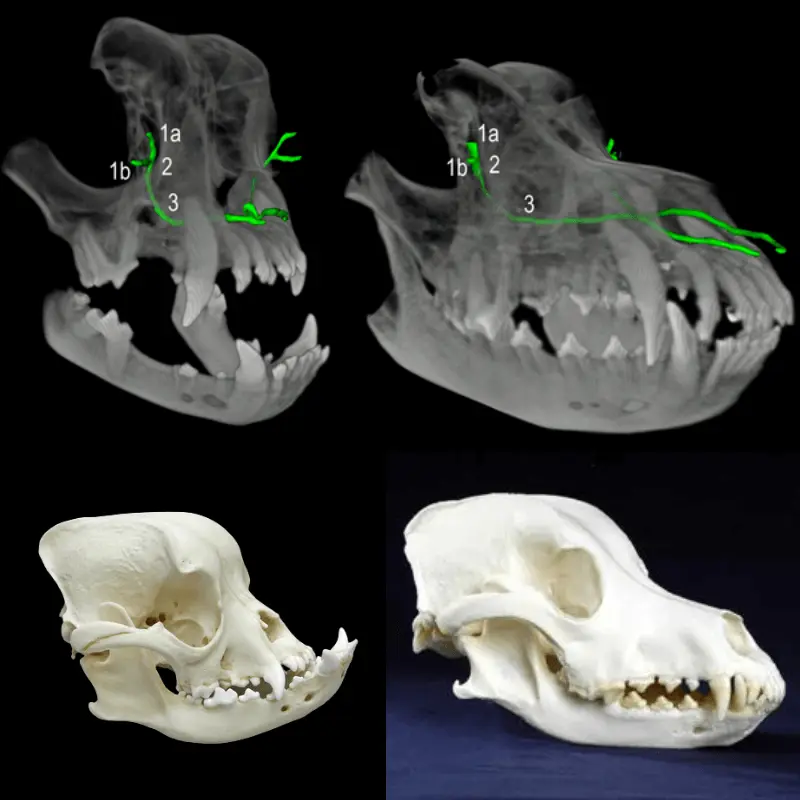
The Genetic Brushstrokes Behind the French Bulldog Skull
1. Role of Genetics in Shaping the Breed’s Distinctive Skull:
At the very essence of the French Bulldog’s striking appearance is the hand of genetics, intricately weaving a canvas of unique traits. Envision genes as minute segments of DNA that serve as instruction manuals, determining everything from the shade of the fur to the wagging pattern of the tail. In our endearing Frenchies, it’s these genes that sculpt the exceptional skull formation. Much like stacking blocks to create distinctive structures, genes combine in various ways to produce varied outcomes. Here, dominant genes act as the primary architects, laying the foundation and influencing the final look more than their recessive counterparts.
2. Selective Breeding Practices and Their Impact on Skull Formation:
The art of selective breeding is akin to a deliberate game of genetic Jenga. It involves cherry-picking dogs showcasing specific coveted traits, such as a smooshed face or big round eyes, and mating them. The progeny, inheriting these desired features, sport that iconic Frenchie skull structure, endearing many hearts. But as with any game, there’s a tipping point. Overzealous stacking, or in this case, aggressive selective breeding, can render the structure or the breed susceptible to instability.
3. Dominant and Recessive Genes Influencing Physical Traits:
To decode the genetic maze, one must grasp the interplay of dominant and recessive genes. Dominant genes are the assertive players, making their presence felt even if just one of them is around. Recessive genes, on the other hand, are the wallflowers, requiring a pair to truly shine. Let’s illustrate: If Fido inherits one gene responsible for a flat face (dominant) and another for an elongated snout (recessive), the outcome? Fido’s adorable flat face takes center stage due to the dominant gene’s influence.
4. Gene Mutations and Potential Health Risks:
But with every masterpiece comes potential pitfalls. Just as a precariously built Jenga tower is prone to collapse, aggressive selective breeding can lead to genetic mutations, resulting in health complications. For instance, the Brachycephalic Syndrome, which haunts many dogs with cute “pushed-in” faces, leads to respiratory distress. Then there’s Hip Dysplasia, a skeletal anomaly more prevalent in large breeds, or Patellar Luxation, where the kneecap tends to dislocate—a common issue in smaller dog breeds. Furthermore, spinal concerns like Hemi Vertebrae and Intervertebral Disk Disease can arise due to the distinct curvature of the spine in French Bulldogs.
Deciphering the Health Implications of the French Bulldog’s Skull Structure
1. Brachycephalic Obstructive Airway Syndrome (BOAS):
The allure of the French bulldog’s squashed nose and endearing flat face, defining its brachycephalic nature, is undeniable. Yet, this same physical attribute becomes the root cause of Brachycephalic Obstructive Airway Syndrome (BOAS). This condition manifests as a series of respiratory distress symptoms due to the breed’s constricted nasal passages and potential elongation of the soft palate. Analogizing their plight, it’s akin to a human attempting strenuous activities while only being able to breathe through a thin straw. For our little four-legged pals, every breath can be an exertion.
2. Dental Problems and Compressed Jawline:
When observing the dental anatomy of a French bulldog, it’s evident that their compact jawline offers minimal real estate for their dental ensemble. This spatial limitation predisposes them to dental overcrowding. Much like fitting a multitude into a compact space, the teeth compete for space, which can lead to dental challenges such as:
- Overcrowded Teeth: Cramped conditions make cleaning more difficult and can misalign the bite.
- Gum Disease: The proximity of teeth fosters bacterial growth, potentially causing gum diseases.
- Tooth Decay: Tight spaces make efficient cleaning a challenge, amplifying the risk of decay.
3. Eye Issues and Shallow Eye Sockets:
The distinctive large, round eyes of the French bulldog, though captivating, are housed in relatively shallow sockets. This structural feature, while contributing to their charm, exposes them to a greater risk of ocular issues. Their eyes, much like unprotected lenses, become susceptible to:
- Cherry Eye: A condition where the third eyelid’s gland prolapses, causing a red bulge.
- Dry Eye: Insufficient tear production leads to chronic dryness.
- Corneal Ulcers: Wounds or abrasions on the eye’s surface, often due to external injuries or irritants.
4. Spine-related Concerns Due to Disproportionate Head Size:
The substantial head of the French Bulldog, in stark contrast with its petite body frame, presents biomechanical challenges. This disproportionate anatomy exerts added strain on their spine, potentially paving the way for spinal conditions. A notable example is intervertebral disk disease (IVDD), wherein the vertebral disks experience wear or herniation. To grasp the strain of this physical imbalance, imagine balancing a weighty object atop a fragile support; over time, the support is bound to buckle under pressure.
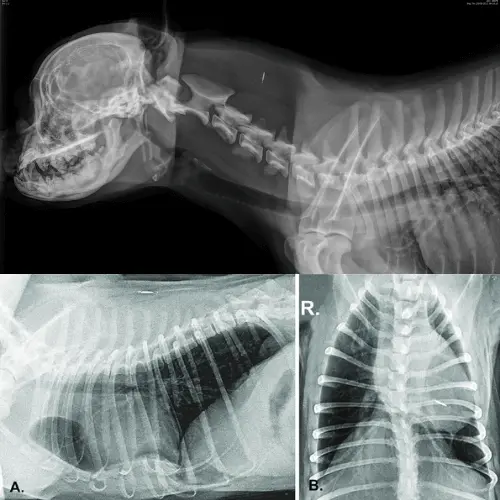
Ensuring the Wellness of Your French Bulldog: Tackling Skull-Related Challenges
1. Regular vet check-ups:
Much like how we humans require routine medical check-ups to keep our health in optimal condition, the unique cranial structure of your French bulldog necessitates regular visits to the vet. Think of these as periodic health screenings tailored to your pet’s distinctive needs. Routine examinations can help in the early identification of potential Frenchie skull-related challenges. Early detection not only simplifies treatment but often results in better health outcomes.
2. Proper Diet Management:
A balanced diet isn’t just vital for us humans; it’s paramount for our furry companions as well. The right nutrition acts as the frontline defense against many health challenges. Excessive weight, especially in French bulldogs, can exacerbate spinal strain due to their unique skull-to-body ratio. So, what’s the culinary mantra for them?
- High-quality dog food: Ensure that it’s laden with essential nutrients tailored to their specific needs.
- Moderation in treats: Occasional rewards are fine but avoid overindulgence.
- Hydration: Keep a steady supply of fresh water available at all times.
Each Frenchie has its dietary nuances, so it’s essential to tailor their diet according to individual needs.
3. Surgical Interventions:
Certain severe conditions, intrinsically tied to the breed’s skull structure, might necessitate surgical interventions:
- BOAS surgery: This operation is focused on creating a more comfortable breathing experience, either by expanding the nostrils or by addressing excess throat tissue.
- Dental surgery: Here, the focus is on addressing overcrowded teeth, which might involve extraction or orthodontic measures.
Such interventions, while sounding daunting, can drastically elevate the comfort and life quality of your canine companion.
4. Responsible Breeding Practices:
The essence of preventing many skull-related issues in French bulldogs lies at the very root – responsible breeding practices. Many genetic disorders that manifest as skull issues are avoidable through conscientious breeding:
- Breed for health, not just aesthetics: Prioritizing health over appearance can mitigate many hereditary issues.
- Health screening: Opt for breeders who advocate for and conduct thorough health examinations of the breeding pairs.
Promoting responsible breeding not only ensures the health of the offspring but also preserves the inherent charm of the breed without compromising well-being.
Comparative Analysis: French Bulldog vs Other Brachycephalic Breeds
1. Brachycephalic Breed Comparison:
At the heart of the unique appearance of the French Bulldog, or the endearing Frenchie, is its brachycephalic nature, which translates to ‘short-headed’. This morphological feature, characterized by a compressed Frenchie skull, is shared with fellow breeds like pugs and boxers. The defining trait isn’t merely aesthetic but has underlying health implications. Unlike their non-brachycephalic counterparts, Frenchies might grapple with respiratory challenges owing to their narrowed air passages, making them vulnerable to conditions such as Brachycephalic Obstructive Airway Syndrome (BOAS).
2. Health Implications and Lifespan:
But it’s not all clouds without silver linings. Contrary to what one might assume given their potential health vulnerabilities, French Bulldogs typically boast commendable life expectancies when compared to certain other breeds. With an average lifespan ranging between 10-12 years, they hold their own quite well. Here’s a snapshot of how they fare against the Pugs and Boxers:
- French Bulldog: Average Lifespan of 10-12 years with susceptibilities to BOAS and Hip Dysplasia.
- Pug: An average of 12-15 years, but they too share a vulnerability to BOAS along with potential eye conditions.
- Boxer: Typically lives 9-12 years and might face health issues like heart conditions and a higher susceptibility to certain cancers.
3. Popularity and Temperament:
The world’s adoration for Frenchies isn’t rooted merely in their unique appearance but is significantly influenced by their amiable temperament. Adaptable to various living conditions and renowned for their affable nature, they’re celebrated companions. Their rapport with kids and co-existence harmony with other pets further amplifies their charm. When we pull up the popularity ranks, the American Kennel Club statistics indicate:
- French Bulldog: Topping the charts in metropolises such as New York City and Los Angeles
- Boxer: Holding its ground with consistent popularity.
- Pug: Still a favorite for many owing to its characteristic appearance and playful demeanor.
The allure of the French Bulldog, juxtaposed with breeds like Pugs and Boxers, stems from a blend of its distinctive appearance, resilient lifespan, and winning personality. However, it’s essential to remember that, irrespective of breed norms, each canine companion carries its quirks, surprises, and boundless love, making them truly irreplaceable.
The French Bulldog Skull: An Artistic Emblem and Cultural Phenomenon
1. Popularity in Art:
There’s an undeniable allure to the French Bulldog’s visage, a cocktail of quirky charm fused with a distinctive profile. This uniqueness hasn’t just won the hearts of pet enthusiasts but has captivated the artistic community as well. From the realm of digital marketplaces like Etsy to traditional art galleries, the French Bulldog’s silhouette, especially its characteristic Frenchies skull, enjoys a prominent presence. Rendered in varying styles, from abstract interpretations to intricate realism, this breed’s profile is a testament to its versatile artistic appeal.
2. Merchandising Powerhouse:
As if capturing the canvas wasn’t enough, the French Bulldog’s iconic look has waltzed its way into the world of merchandise. The market recognizes the magnetic draw of this breed. A casual scroll through platforms like Etsy or even physical stores, and one is inundated with a myriad of products echoing Frenchie’s silhouette:
- Apparel flaunting innovative designs of the French Bulldog skull.
- Ceramic mugs playfully showcase caricatured versions of this breed.
- Delicate jewelry, masterfully shaped to mirror miniature versions of the dog or its iconic skull.
This expansive merchandise range is a clear nod to the breed’s towering cultural significance.
3. Influence on Pop Culture:
If art and merchandise weren’t indicative enough, the French Bulldog has also found its way into the limelight of pop culture. Featured in animations, movies, and even as beloved pets of celebrities, its unique countenance has become synonymous with instant recognition. An illustration of its profound influence is the character Stitch from Disney’s “Lilo & Stitch.” Although an extraterrestrial creation, Stitch’s design drew palpable inspiration from breeds like the English and French Bulldogs, highlighting their entrenched status in our shared cultural narrative.
4. A Symbolic Representation:
Beyond just being a visually striking motif, the Frenchie skull, in art and merchandise, has evolved into a symbolic tokens. Possessing them is often seen as a nod to a deeper appreciation, transcending the breed itself. They stand as silent yet eloquent testimonies of a person’s love and affinity for canines. To don an accessory or own an item showcasing the breed is to wear one’s heart on their sleeve, celebrating the unwavering bond between humans and their furry companions.
The Sugar Skull French Bulldog
The Sugar Skull French Bulldog is not a distinct breed in the traditional sense but rather an artistic rendition of the French Bulldog that is inspired by the vibrant imagery of Dia de los Muertos or the Day of the Dead, a popular Mexican holiday. The “sugar skull” refers to the colorful and ornate skull designs that are synonymous with this celebration. Thus, the Sugar Skull French Bulldog incorporates these vibrant designs in various forms such as tattoos, paintings, and other mediums.
Pros of Owning a Sugar Skull French Bulldog:
- Personality: Renowned for its playful and loving nature, this breed makes an excellent companion. They are known for their social nature, often forming strong bonds with their families.
- Size: Their compact size makes them suitable for apartment living and homes with smaller spaces.
- Maintenance: Generally, French Bulldogs have a short coat, making grooming relatively easy compared to longer-haired breeds.
- Adaptability: They are quite adaptable to their living conditions, whether it’s a bustling city environment or a quieter suburban setting.
Cons of Owning a Sugar Skull French Bulldog:
- Health Concerns: French Bulldogs are brachycephalic, meaning they have short noses, which can lead to respiratory issues. Regular vet visits are essential to monitor their health.
- Sensitivity to Temperature: Their short snouts make them susceptible to extreme temperatures, both hot and cold. Extra care is needed during the summer and winter months.
- Activity Levels: While not hyperactive, they do require regular walks and playtime to keep them fit and engaged.
Things to Consider Before Buying:
Understanding the Breed: Realize that the “sugar skull” aspect is more of an artistic theme and not a different breed variation. The dog’s care, behavior, and health considerations remain consistent with standard French Bulldogs.
- Space: They’re suitable for apartments but still need outdoor time for walks and play.
- Budget: Apart from the initial cost, consider future expenses such as vet visits, food, grooming, and other care requirements.
- Commitment: Dogs are a long-term commitment, usually 10-12 years for French Bulldogs.
Frequently Asked Question
Why do French Bulldogs have a unique skull shape compared to other breeds?
French Bulldogs are brachycephalic, which means they have a shorter and flatter skull structure compared to other breeds. This gives them their distinctive “smushed” face appearance, characterized by a short nose and flat forehead.
Are there health issues associated with the French Bulldog’s skull structure?
Yes, due to their brachycephalic nature, French Bulldogs can suffer from Brachycephalic Obstructive Airway Syndrome (BOAS). The compressed airways can lead to breathing difficulties, and in severe cases, they might require surgical intervention. Additionally, their unique dental arrangement, resulting from the compact jawline, can lead to dental problems.
How does the French Bulldog’s skull influence its dental arrangement?
Because of their brachycephalic skull structure and compact jawline, French Bulldogs often have crowded teeth. This arrangement can lead to dental issues, such as tooth decay or gum disease, as cleaning and maintenance can be more challenging.
Can selective breeding practices impact the French Bulldog’s skull formation?
Yes, selective breeding to accentuate certain aesthetic traits, like a flatter face, can exacerbate the breed’s brachycephalic features. While this might enhance their unique appearance, it can also increase the risk of health issues associated with their French bulldog skull shape.
Do the French Bulldog’s bat-like ears play a role in its skull structure?
The French Bulldog’s bat-like ears are more of a breed characteristic than a direct result of its skull structure. While the ears are a prominent feature of their head, they don’t influence the overall shape of the skull. The upright, rounded ears contribute more to the breed’s appearance than to any health or structural implications.
Conclusion
With its unmistakable and endearing French Bulldog Skull structure, it embodies a unique blend of aesthetic appeal and inherent challenges. This brachycephalic breed, characterized by a short and flat skull, presents a distinctive look that has captured the hearts of many around the world. While this skull shape grants the French Bulldog its signature “smushed” face and bat-like ears, it also brings with it certain health implications, notably in respiratory and dental domains. As enthusiasts and potential owners navigate the world of French Bulldogs, it’s vital to appreciate both the charm and the responsibilities that come with this structure. Embracing the breed means not only celebrating its unique appearance but also ensuring attentive care, promoting responsible breeding, and understanding the deeper genetic and health contexts tied to its iconic skull.
